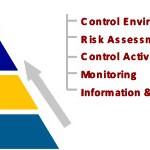Contact Us
+61 419 533 234
The practice of corporate governance has evolved, as Kiel and Nicholson remind us, with the growth of the capitalist system and the development of world economies.[1] In the current climate of corporate Australia, the close attention being paid to corporate governance issues is being driven by two key factors:
Boards and their Directors now have to pay far more attention than they did in the past to the company’s strategic directions, processes, delegations, behaviour in the market place, and so on. All too often, deficiencies in corporate governance are only discovered after the company has filed for bankruptcy or is placed in the hands of receivers. And yet, corporate collapses are nothing new in Australia. Trevor Sykes’s study, Two centuries of panic, begins with the collapse of the Bank of New South Wales in 1826![2]
Corporate Governance has previously been defined as the following:
Risk Management is the process by which Directors can evaluate the management of risk to enhance shareholder value. Directors should also have an established framework for monitoring and maintaining internal controls to identify and reduce risks to the business.
Directors have the responsibility to ensure that their organisation has taken all reasonable measures to identify, control and finance risks. The ability to accurately assess risks, implement mitigation strategies and monitor compliance has become an essential function of good corporate governance.[3]
[1] Kiel, G. & Nicholson, G. (2003), Boards that work: A new guide for directors,Mc-Graw-Hill: Sydney, p 17.
[2] Sykes, T. (2003), Two centuries of panic: A history of corporate collapse in Australia, Allen & Unwin: Sydney.
[3] Kiel, G. & Nicholson, G. (2003), Boards that work: A new guide for directors,Mc-Graw-Hill: Sydney, p 210
Wynbcp is perfect for this scenario

